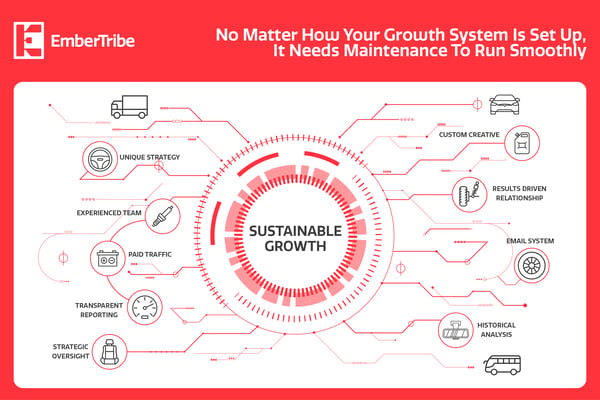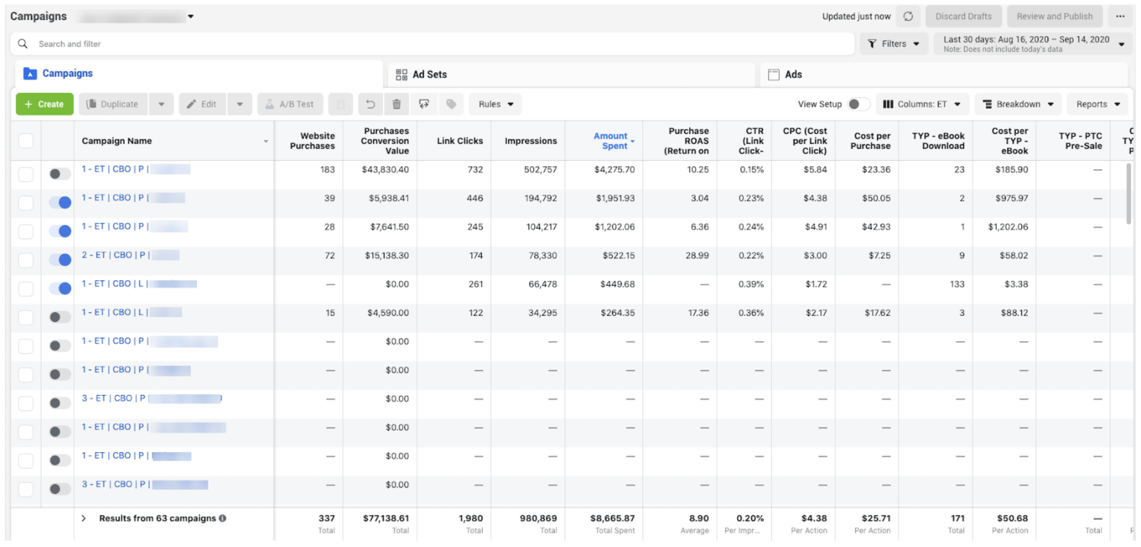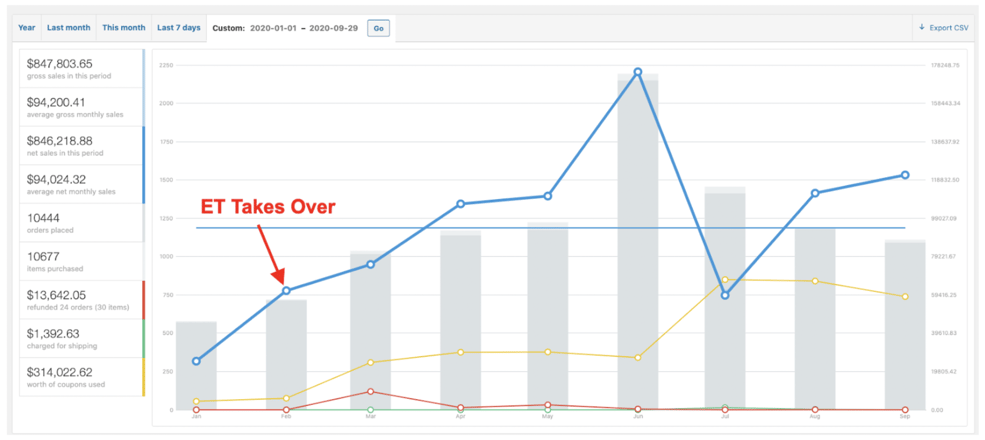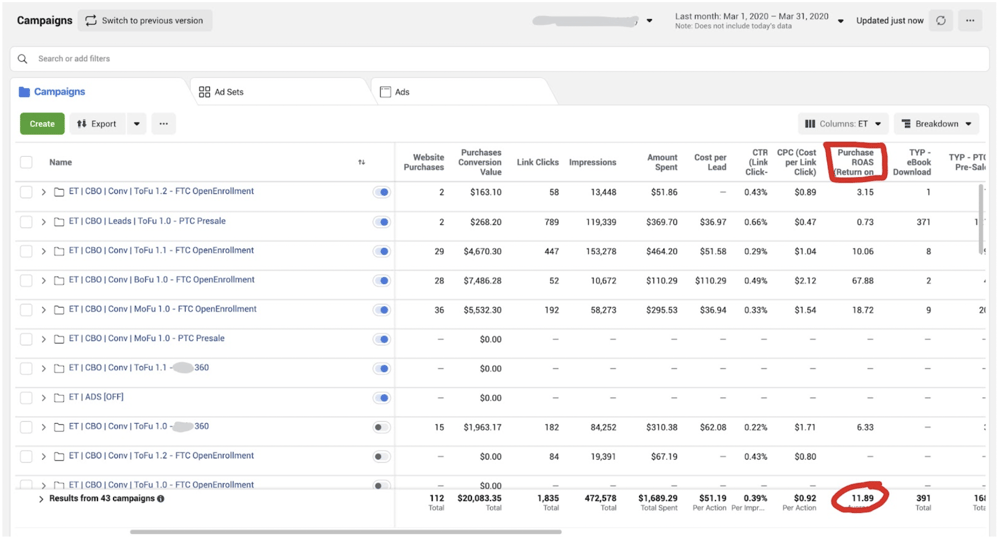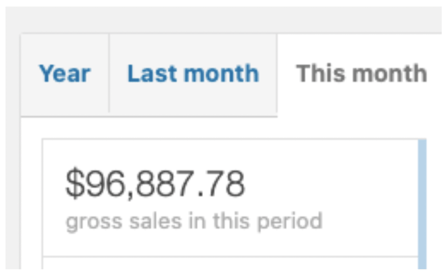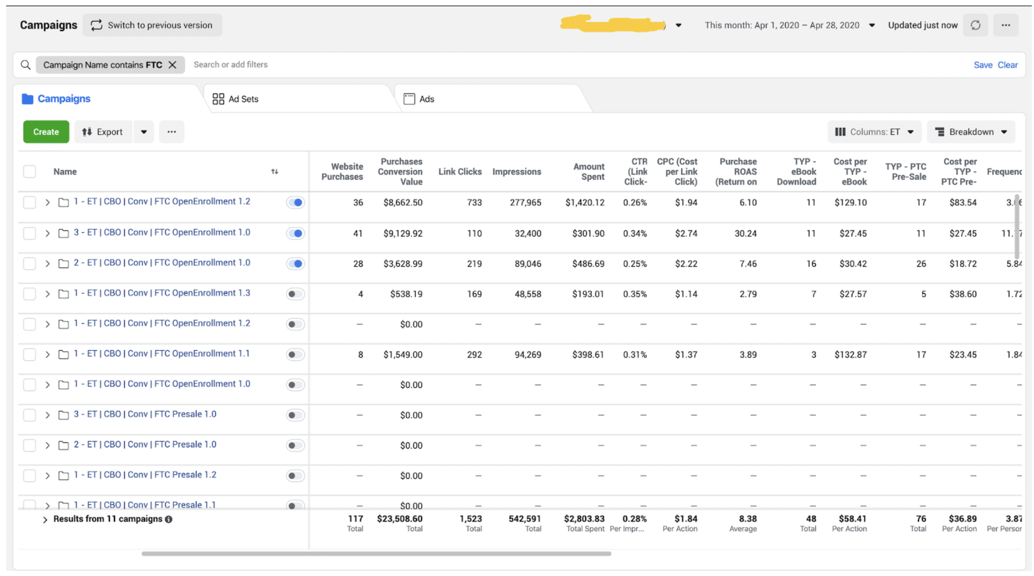The first step for creating a successful campaign is to identify what you know, what you don’t know, what you want to know. This helps inform the testing and research that go into building a growth strategy.
Challenge #1: Starting with unreliable Facebook data.
While the client had run ads in the past, they were not run consistently enough to gather reliable data that could inform our path. On top of that, they did not have full Facebook pixel integrations, so Facebook standard events were not properly set up.
Our first challenge would be to set up their pixel properly and establish a consistent process for running Facebook ads that would deliver helpful and reliable data.
Challenge #2: Expanding a narrow existing audience.
Because ALTIS hadn’t dipped their toes into paid traffic for growth before, we knew we would need to spend a lot of time testing audiences to get their ads in front of the right crowd. Running ads for the first time also means a lot of unknown challenges. This makes rapid testing even more important—it’s an opportunity to quickly gather data
From our initial audit of this client, we identified that ALTIS currently served a very niche, targeted market. However, we saw an opportunity to look outside of that target audience and bring in new audiences based on additional research and audience layering.
Challenge #3: Building out a full-funnel, from ToFu to BoFu, primed for bringing in new subscribers across multiple channels.
Our client needed a steady drip of new leads as well as strategies to keep audiences moving through the funnel and eventually becoming purchasers. While we knew that we would start our research using Facebook because of the platform’s powerful capabilities, we would also want to validate additional channels for finding customers.
For a lot of brands, it can be tempting to pump all of your ad spend into one channel once it starts bringing in sales. The upside of this approach is that you can maximize return on ad spend using a channel that’s proven to work.
However, the downside to this approach is that you’re putting all of your eggs in one basket. Once that platform stops performing at the same level, whether because of changes to features or because a new platform becomes the hot new thing, you’ll be forced to start from scratch.
A multi-channel approach allows you to start validating multiple sources for sales and strengthening your strategy into a growth system built for long-term growth.
